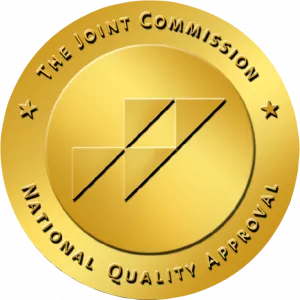Yes, Modafinil can be addictive. While it is generally considered to have a lower potential for abuse compared to traditional stimulants, it can still be addictive, especially when misused. Addiction to modafinil doesn’t always follow the same pattern as addiction to substances like opioids or alcohol, but psychological dependence can develop. People might start using modafinil to get through demanding workdays or study sessions, and over time, they may feel unable to function without it. This dependency is particularly dangerous because modafinil is seen as a "safer" alternative to stronger stimulants, leading users to underestimate the risks of overuse. The brain can start to rely on the drug to maintain focus and productivity, and in some cases, higher or more frequent doses become necessary to achieve the same effects. While physical withdrawal symptoms are rare, the mental reliance can be tough to break, leading to patterns of misuse that resemble addiction.
What is Modafinil?
Modafinil is a prescription medication primarily used to treat sleep disorders like narcolepsy, obstructive sleep apnea, and shift work sleep disorder. It works by stimulating certain brain chemicals that promote wakefulness, making it easier to stay alert and focused. Unlike traditional stimulants like caffeine or amphetamines, modafinil has a more subtle effect, often described as enhancing cognitive performance without the jitteriness or crash. It’s also been dubbed a “nootropic” or "smart drug" because of its growing off-label use by people looking to improve their focus, productivity, and mental stamina. Despite its medical benefits, modafinil is not without risks, especially when taken in larger doses or for extended periods without medical supervision. Over time, users may become dependent on it to function normally, which can lead to the development of addiction-like behaviors.
Provigil Side Effects
Modafinil might seem like a miracle pill at first, but it comes with its share of side effects, especially when taken without medical supervision or in high doses.
Common side effects of Provigil (modafinil) include:
- Headaches
- Nausea
- Dry mouth
- Dizziness
- Anxiety
- Insomnia
- Jitteriness (particularly if they take it later in the day.)
More serious side effects of Provigil, though less common, can include:
- Elevated heart rate
- High blood pressure
- Chest pain
Psychological Side Effects of Modafinil
For those with a history of mental health issues, modafinil may exacerbate symptoms of anxiety, depression, or even trigger manic episodes in some cases. Long-term use can also lead to emotional blunting, where users feel less connected or responsive to their emotions.
Although the drug is often marketed as safe and non-addictive, it’s important to recognize that prolonged use can lead to dependency, both mentally and physically, making it difficult to stop without facing withdrawal-like symptoms such as extreme fatigue or difficulty concentrating.
Modafinil Overdose
Although modafinil is considered safer than traditional stimulants, taking too much can still lead to an overdose. A modafinil overdose doesn’t typically result in the same life-threatening risks as overdosing on substances like opioids or amphetamines, but it can still be dangerous and uncomfortable.
Symptoms of a Modafinil overdose may include:
- Severe restlessness
- Anxiety
- Rapid heart rate
- Difficulty sleeping
- Hallucinations
In extreme cases, an overdose can lead to high blood pressure, chest pain, or even seizures. The risk of overdose increases when users take higher doses to chase more intense effects or when they mix modafinil with other stimulants or medications. If someone experiences an overdose, medical attention should be sought immediately to manage the symptoms and prevent further complications. It’s also a wake-up call that even so-called “smart drugs” can be harmful when not used responsibly.
Modafinil Withdrawal

The most common modafinil withdrawal symptoms are extreme fatigue and difficulty concentrating, as the brain adjusts to functioning without the drug's stimulating effects. Users might also experience mood swings, irritability, and a general sense of lethargy. In some cases, people report intense cravings for modafinil, especially if they've relied on it to meet work or academic demands. Unlike substances with more physical withdrawal symptoms, modafinil withdrawal is mostly psychological, but that doesn’t make it any easier to overcome. The key challenge is regaining the ability to focus and stay alert without the drug, which can take time as the brain recalibrates. Gradually tapering off the drug under medical supervision can help minimize the discomfort of withdrawal.
How Long Does Modafinil Stay in Your System?
Modafinil can stay in your system for up to 30 hours. Modafinil has a relatively long half-life, which means it can stay in your system for quite some time. On average, the drug’s half-life is about 12 to 15 hours, meaning it takes that amount of time for half of the drug to leave your body. So how long does Modafinil last? For most people, up to 30 hours or more, depending on factors like metabolism, age, liver function, and dosage. This extended presence is why it’s important to be cautious about when you take modafinil, as using it too late in the day can lead to difficulty sleeping. Although the stimulating effects may wear off within a few hours, trace amounts of the drug can still be detected in the body for one to three days after use, especially in urine tests. For those taking modafinil regularly or at higher doses, it may take even longer to fully clear from the system.
How Do You Know If Someone is Abusing Modafinil?
Recognizing if someone is abusing modafinil can be tricky, especially since it’s often used for legitimate reasons like improving focus or combating sleep disorders. However, there are signs to watch for that may indicate misuse. One of the first red flags is an increasing reliance on the drug to complete daily tasks or to stay awake for extended periods, beyond what’s medically recommended. If someone is taking modafinil without a prescription or using higher doses than prescribed, it could signal abuse. Behavioral changes may also be a clue—things like irritability, anxiety, or restlessness, especially when the person is not on the drug. You might also notice patterns of sleep disruption or insomnia, as overuse can interfere with normal sleep cycles. If the person seems to prioritize taking modafinil to the detriment of other areas of life—like relationships, health, or responsibilities—it could be a sign of dependence or abuse. In more serious cases, they may exhibit symptoms of withdrawal, such as extreme fatigue or difficulty concentrating, when they stop using the drug.
Treatment for Modafinil Abuse
Treatment for modafinil addiction typically involves a combination of behavioral therapy, medical support, and lifestyle adjustments. Since physical withdrawal symptoms are generally mild, treatment often focuses more on breaking the psychological dependence on the drug. The first step is usually to taper off modafinil under medical supervision, rather than quitting cold turkey, which can help ease withdrawal symptoms like fatigue and mental fog. Therapy, particularly cognitive behavioral therapy (CBT), is a key part of recovery, as it helps individuals identify the underlying reasons they began relying on the drug—whether it's pressure to perform at work or school, or underlying mental health issues.
Building healthier coping strategies, like improving time management, stress relief, and sleep hygiene, can also help reduce the need for modafinil. In some cases, addressing co-occurring conditions like anxiety or depression may be necessary, as they often fuel drug misuse. Support groups and ongoing counseling can provide accountability and encouragement as individuals work through recovery.
If you or someone you love is struggling with modafinil misuse, Avenues Recovery Centers is here to help. Our compassionate team provides personalized treatment plans designed to address both the physical and mental aspects of addiction. Don’t wait—reach out today and take the first step toward a healthier, drug-free future.



